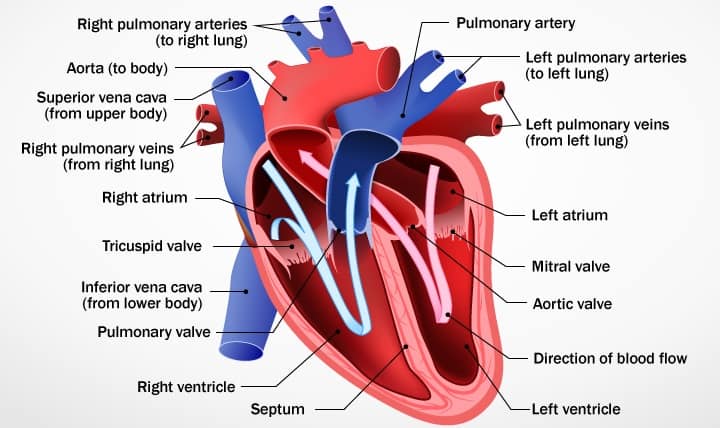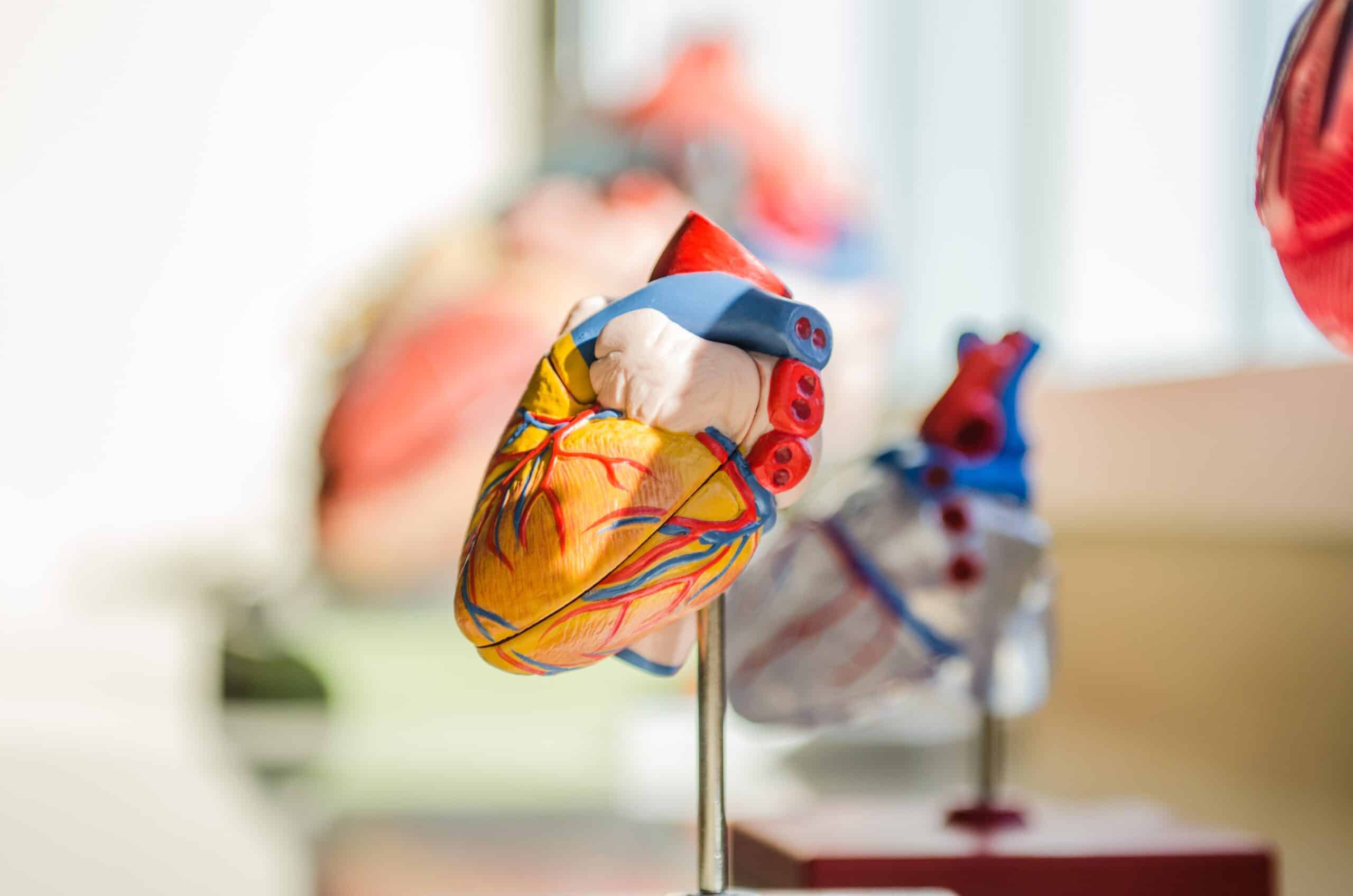It’s Happy Heart month!
February – the month when everyone’s hearts are a flutter with roses and chocolates and vows of true love (or possibly feeling like it’s been run over by a stampede of elephants then left to die and wither alone). Either way it is a wonderful time to raise issues of heart health to ensure this year’s Valentines are in fact fluttering from romance (or lack of it) and not from an underlying cardiac condition or on the brink of a myocardial infarction.
‘In 2017 the leading cause of death in Australia was Ischaemic heart disease (18,590 deaths)’ [1]
You don’t need to be a cardiac surgeon to know that a healthy heart is an important component for longevity and quality of life. If you don’t look after it, it doesn’t look after you. There are factors you cannot change about yourself that may influence how susceptible your heart is to problems (eg age, gender, ethnicity, family background), however there are many that you can, and physical activity (PA) among others is one of them[2, 3].
‘In 2017-2018 43.7% of adults aged 18-64 years described their day at work as mostly sitting and only 15.0% met the 2014 Physical Activity Guidelines in 2017-18’ [1]
A review of 47 research articles in 2015 found on average we spend 50% of our waking day sitting on our behinds (e.g. in front of a computer or television) and that prolonged sedentary time is linked to all-cause mortality, cardiovascular disease, and type 2 diabetes [4] among other things.
So, what does the heart do exactly? (the super short story)
The heart acts as a pump for blood to move around your body. To keep alive your heart needs to pump enough oxygenated blood to all the different parts of the body (e.g. limbs, organs, brain) so they have fuel (i.e. oxygen and other nutrients) to operate.
It (the heart) also needs to take up the old used (deoxygenated) blood, put it through a type of human washing machine (lungs), spit out the crap it doesn’t need (carbon dioxide) and put it in the stuff it does (oxygen) and the cycle of the human body starts again [5]…. And we keep living. Yaah!

Image source: Blood flow through the heart, https://health.mil/News/Gallery/Photos/2016/02/05/..
Like an old unregistered car, the heart may not work so well if it’s left sitting in the garage!
As responsible heart owners, we should do what we can to make sure our heart stays strong and healthy, and yes being physically active can help significantly. This doesn’t mean we suddenly go out and buy an overpriced pair of sneakers and go running 10kms every day (this may do more damage than good if it’s not something you normally do).
Lucky for us the experts in the industry have provided some guidelines for the types and amounts of physical activity needed to keep our heart fluttering for the right reasons.
Minimum PA recommendations for a healthy body, mind and heart:
Regular practice of aerobic and muscle strengthening activities are recommended for optimal health. As well as committed exercise activities our home chores may also contribute to keep our tickers ticking on time!
Recommendations for Aerobic Physical Activities
- Minimum 30 minutes 5 days per week OR
- 150-300 minutes a week of moderate aerobic intensity per week OR
- 75-150 minutes of vigorous intensity aerobic activity per week OR
- equivalent of both.
Examples of moderate and vigorous aerobic activities
| Moderate Intensity | Vigorous Intensity |
| Walking briskly (5-6.3km/ph.)
Water aerobics Cycling (<16km/ph.) Tennis (doubles) Ballroom dancing Heavy cleaning (e.g. washing windows) Sweeping/ vacuuming Mowing the lawn General gardening |
Brisk walking (6.3km/ph.>), jogging, or running
Swimming laps Tennis (singles) Aerobic dancing Bicycling (16km/ph. >) Jumping rope Hiking uphill or with a heavy backpack Heavy gardening (continuous digging or hoeing) Carrying heavy loads e.g. bricks |
[3, 6-7]
Recommendations for Muscle Strengthening Activities
- 2 days per week that maintain/increase strength and endurance of major muscle groups
| Examples of Muscle Strengthening Activities |
| Exercises/training involving lifting weights or working with resistance
Pilates Yoga Cycling Dance Climbing stairs or hills Heavy gardening (eg digging) |
[3, 6-8]
Bonus points:
*Moderate intensity aerobic activity can be accumulated to total 30mins with bouts lasting > 10 minutes … yes, the walk to the bus stop may count!
** performing more than the minimum amount of physical activity recommended may enhance health benefits, depending on the situation of the individual [7].
‘Doing any physical activity is better than doing none. If you currently do no physical activity, start by doing some, and gradually build up to the recommended amount’ [6].
If you haven’t moved much recently remember to take it slowly. Remember too much exercise, depending on your situation and type of exercise may be dangerous, especially if you haven’t exercised for some time or have heart or other conditions [7]. If you are unsure of what or how much exercise is safe for you, please make sure to consult your medical GP.
What to look out for to ensure your heart is happy.
Exercise, eating right, keeping stress levels down, and not smoking are a few of are a few obvious things we can do to look after our hearts (as well as our bodies and minds).
If our heart is not working quite as well as it should be, for whatever reason, there are major signs and symptoms to look out for:
- Pain, discomfort in chest, jaw, arms*
- Shortness of breath*
- Dizziness or fainting*
- Swelling of the leg, foot and/or ankle (ankle oedema)
- Forceful or rapid heart beats
- Leg pain and/or cramping during walking or walking upstairs, which disappears after 1-2 minutes
- Heart murmur
*These are listed by the Heart Foundation as common symptoms of a heart attack [9] and immediate treatment may be critical. If you experience these please call 000 for emergency
[7, 9]
Whilst not all symptoms necessarily mean your heart may be in danger, it is definitely worth a visit to your medical GP with any concerns.
If you currently have any concerns or problems with your heart you should also absolutely check in with you doctor before taking up any exercise programs and be sure to advise your trainer before commencing!
For more information on heart health and happiness!
There is endless information on heart health out there which can help to ensure your heart can make the most of another Valentine’s day:
- Your medical GP should be able to provide you advice, information and recommendations to keep your heart strong and healthy.
- The Heart Foundation Australia does amazing work on heart health and disease prevention and has some wonderful resources and information available on their website. Be sure to visit them for more information on all things heart health related.
- Look around your home and to your community for different opportunities. You may find it riddled with interesting and fun physical activities and exercise opportunities that you had never thought about! (eg social sports or dance groups, volunteer gardening).
If that’s not enough to get you going, have a look at your Valentine or anyone you love and care about and ask if looking after yourself and your heart is worth the effort!
Written by Lizzi Webb
9 February 2019
REFERENCES
1. Australian Bureau of Statistics. 3303.0 – Causes of Death, Australia, 2017. [accessed 6 February 2019]; Available from: http://www.abs.gov.au/ausstats/abs@.nsf/mf/3303.0.
2. Swain, D.P. and B.C. Leutholtz, Exercise prescription: a case study approach to the ACSM guidelines. 2007: Human Kinetics.
3. The Heart Foundation. Active living. [accessed 7 February 2019]; Available from: https://www.heartfoundation.org.au/active-living
4. Biswas, A., et al., Sedentary time and its association with risk for disease incidence, mortality, and hospitalization in adults: a systematic review and meta-analysis.Annals of internal medicine, 2015. 162(2): p. 123-132.
5. Hoehn, K. and E.N. Marieb, Human anatomy & physiology. 9th ed. 2014, Pearson Educated Limited; Essex.
6. American Heart Association. American Heart Association Recommendations for Physical Activity in Adults and Kids. 18 April 2018 [accessed 2 February 2019]; Available from: https://www.heart.org/en/healthy-living/fitness/fitness-basics/aha-recs-for-physical-activity-in-adults.
7. Riebe, D., et al., eds. ACSM’s guidelines for exercise testing and prescription. 2018, Wolters Kluwer: Philadelphia.
8. National Health Service, U. How to improve your strength and flexibility. 2016 8 February 2019]; Available from: https://www.nhs.uk/live-well/exercise/how-to-improve-strength-flexibility/.
9. The Heart Foundation. Heart attack symptoms. 8 February 2019]; Available from: https://www.heartfoundation.org.au/your-heart/heart-attack-symptoms.

